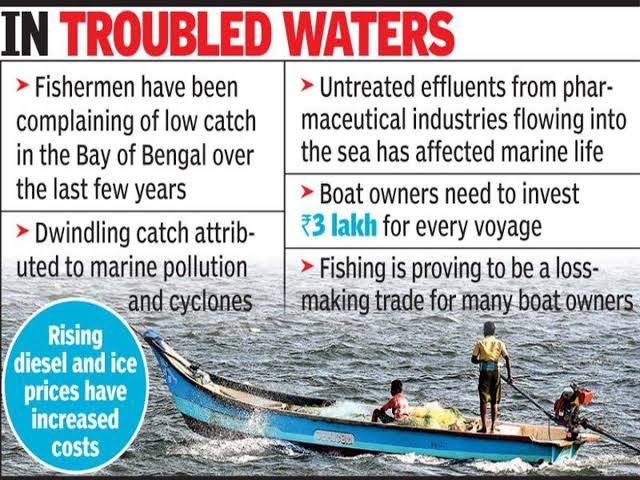Published on: February 15, 2022

PALK STRAIT CONFLICT
PALK STRAIT CONFLICT

WHAT IS A STRAIT
Thin channel of waterways i.e. narrow passage of water that connects two seas or two other large areas of water.
WHERE IS PALK STRAIT
- Between the Tamil Nadu state of India and the Jaffna District of the Northern Province of the island nation of Sri Lanka
- Connects the Bay of Bengal in the northeast with Palk Bay in the southwest
WHAT IS THE BACKSTORY
- Fishermen of India and Sri Lanka have been unable to agree on how to share the fishes in the narrow Palk Strait separating the two countries
- The Strait is known to be a breeding ground for rich marine resources, especially shrimp
- Although India and Sri Lanka agreed to divide the Strait with an imaginary boundary line in the 1970s —the International Maritime Boundary Line (IMBL) – Indian fishermen, from the coastal districts of Tamil Nadu, and from Puducherry, are frequently arrested by the Sri Lankan Navy for “poaching” or engaging in “illegal” fishing activity in Sri Lankan waters.
- Several rounds of bilateral negotiations between the two governments and talks between fishing community leaders from both sides have been held over the years, but a solution remains elusive.
WHAT IS THE CONFLICT, AND BETWEEN WHOM:
- Territorial rights – historically both sides have amicably shared marine resources in the stretch
- Use of “bottom trawling”, the fishing method used by fishermen from Tamil Nadu, the practice scoops out eggs, young fishes, and other marine organisms that eventually die and are thrown back into the sea.
- After Sri Lanka’s civil war ended in 2009, Sri Lankan fishermen started voicing concern about depleting catches, owing to incessant trawling by the Indian fishermen. With the Indian side of the IMBL already ravaged by decades of high profit-yielding bottom trawling, they flock to the Sri Lankan side, with relatively less damage and therefore, more marine resources.
- Clash now is essentially over competing livelihoods of two Tamil-speaking fisher communities, with a glaring asymmetry in power and resources. The Tamil Nadu fishing community, especially the trawler owners, are not only wealthier but also very politically influential.
- The northern Sri Lankan fishermen, on the other hand, are coming out of a brutal war, braving enormous losses and destruction. They use modest boats to practice traditional fishing and get little state support to resurrect their livelihoods.
WHY IS IT YET TO BE RESOLVED:
- Five Indian fishermen returned home dead last year after the Sri Lankan Navy allegedly attacked them mid-sea
- More recently, the death of the two Jaffna fishermen has aggravated the anger on the Sri Lankan side as well.
- India has urged Sri Lanka to adopt a humanitarian approach when it deters Indian fishermen. However, when fishermen deaths occur, apart from customary condemnations and denials, there is little effort from authorities on either side to ensure investigations are completed and perpetrators brought to book.
- New Delhi tried diverting Tamil Nadu fishermen to deep sea fishing methods to wean them away from bottom trawling in the Palk Strait. But the initiative did not take off as planned , and the fishermen still resort to trawling, and often get caught by Sri Lankan authorities.
- Tamil Nadu is yet to agree to the chief demand of northern Tamil fishermen — to stop bottom trawling to restore trust between the fishermen on both sides, and provide a real opportunity to re-commence talks, which they prefer over confrontation.
- The northern Tamil fishermen repeatedly acknowledge Tamil Nadu’s solidarity and support extended to Sri Lankan Tamils during the years of war and later. But they also remind their brothers across the Palk Strait that solidarity does not justify exploitation of resources on which their lives and livelihoods depend.
PALK BAY SCHEME
- Launched in July 2017 under the Blue Revolution programme.
- The scheme is financed by the Union and the State Governments with beneficiary participation.
- It had envisaged the provision of 2,000 vessels in three years to the fishermen of the State and motivate them to abandon bottom trawling.

